Mount Kilimanjaro offers adventurers a choice among eight primary routes, each presenting distinctive advantages as you ascend Africa’s tallest peak. Every Mount Kilimanjaro route introduces a unique blend of perks, ranging from optimal acclimatization strategies, awe-inspiring vistas, comfortable hut lodgings, to secluded and serene trekking paths. Our comprehensive guide is tailored to assist you in pinpointing the perfect route that aligns with your preferences and aspirations for an unforgettable journey.
Kilimanjaro boasts eight primary routes leading to the summit of Africa’s pinnacle. These paths include Lemosho (Shira route), Machame, Marangu, Rongai, Northern Circuit, Umbwe, Kilema, and Western Breach.
Moreover, each route offers various itineraries tailored to diverse preferences. Take, for instance, the Lemosho route, which presents 6, 7, 8 and 9-day options. Each itinerary boasts a distinct acclimatization profile. While the decision between shorter or longer durations might appear insignificant, the extended itineraries tend to yield higher success rates owing to superior acclimatization. If you’re uncertain about which Kilimanjaro route or itinerary suits you best for your Kilimanjaro ascent, fear not! We’ll guide you through the unique advantages and potential drawbacks of each route to help you make an informed choice.
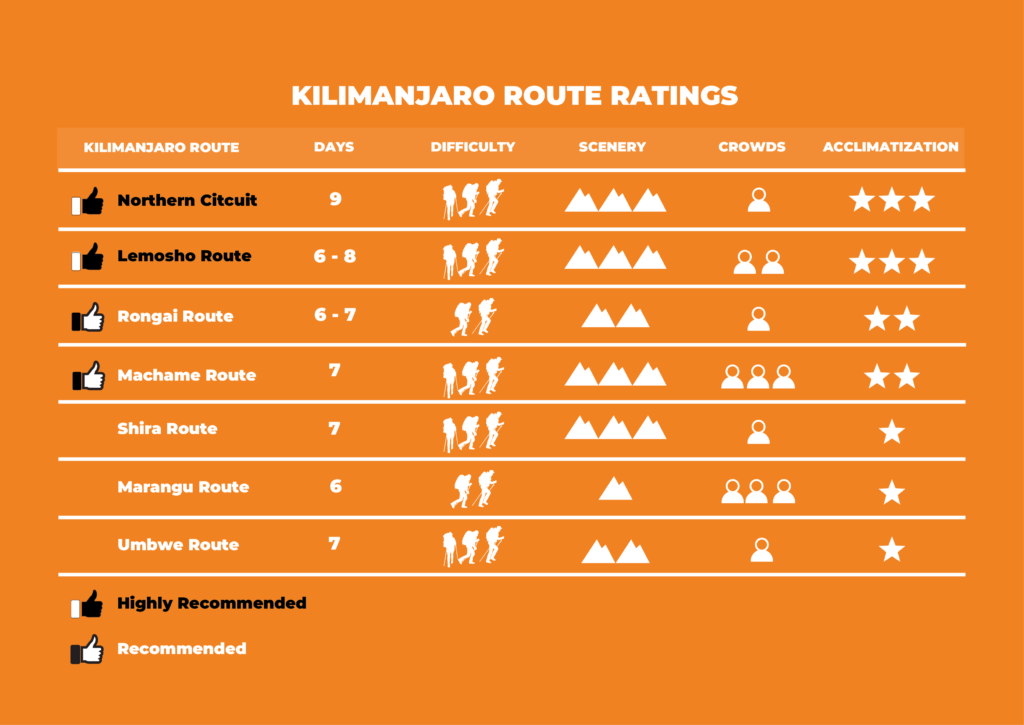
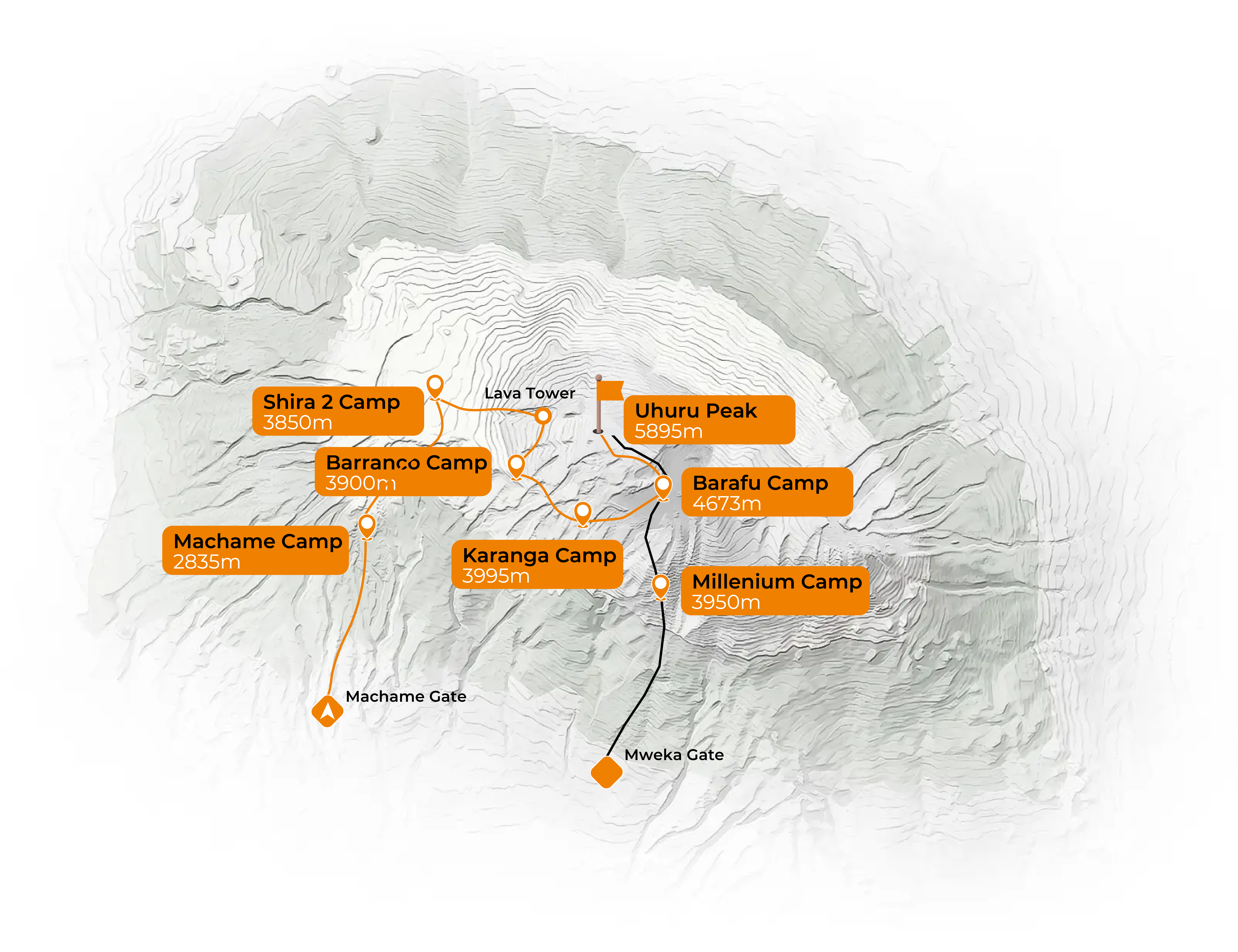
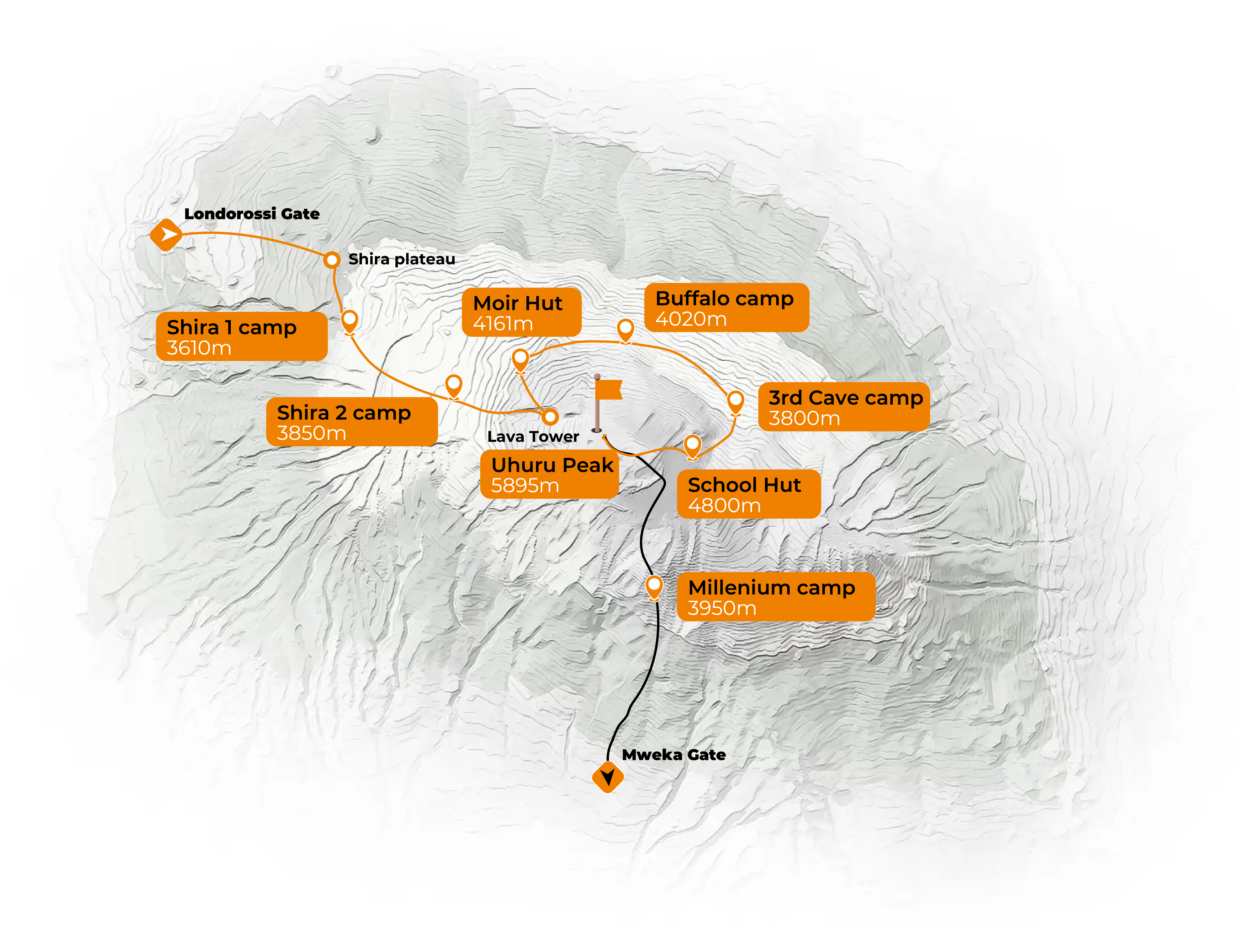
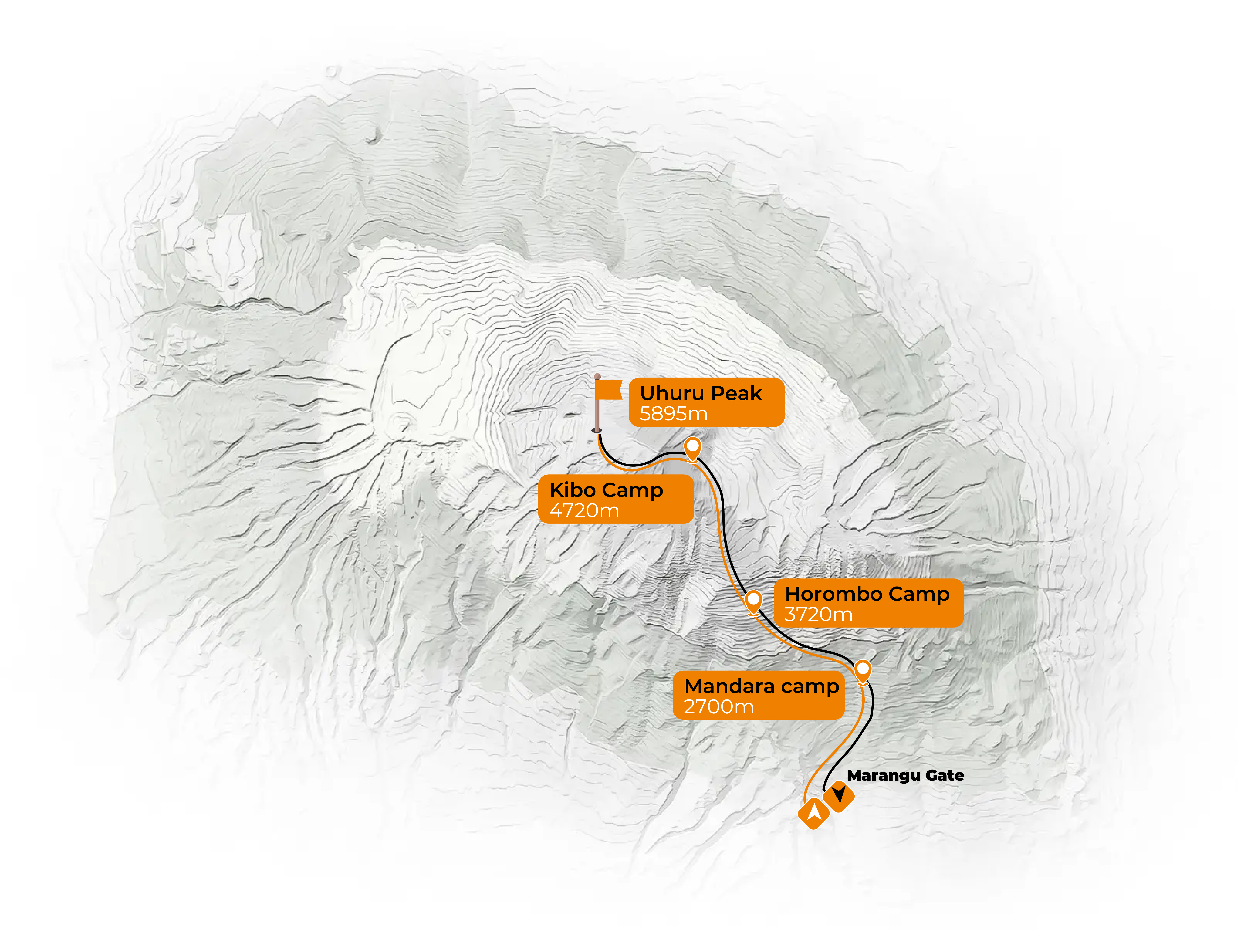
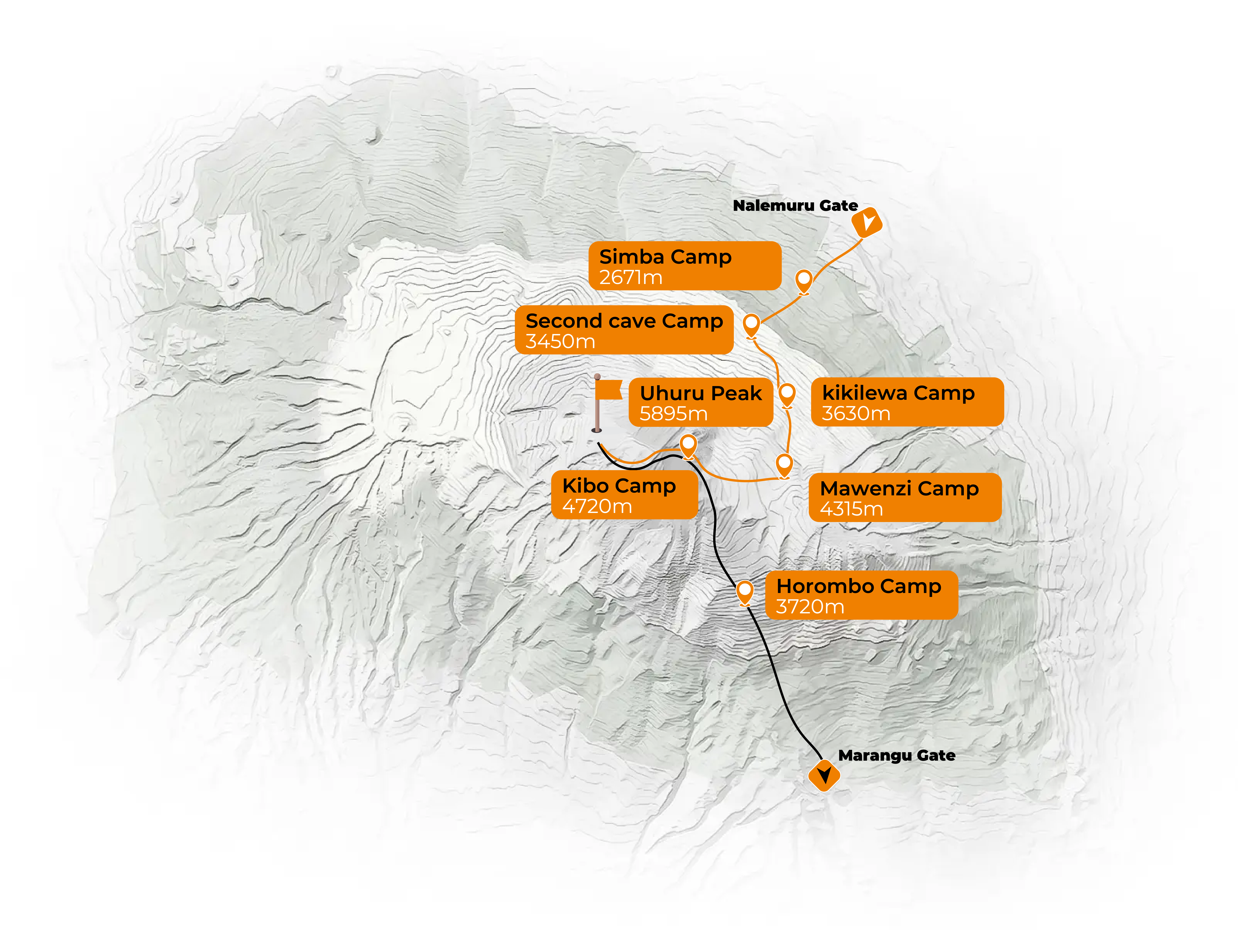
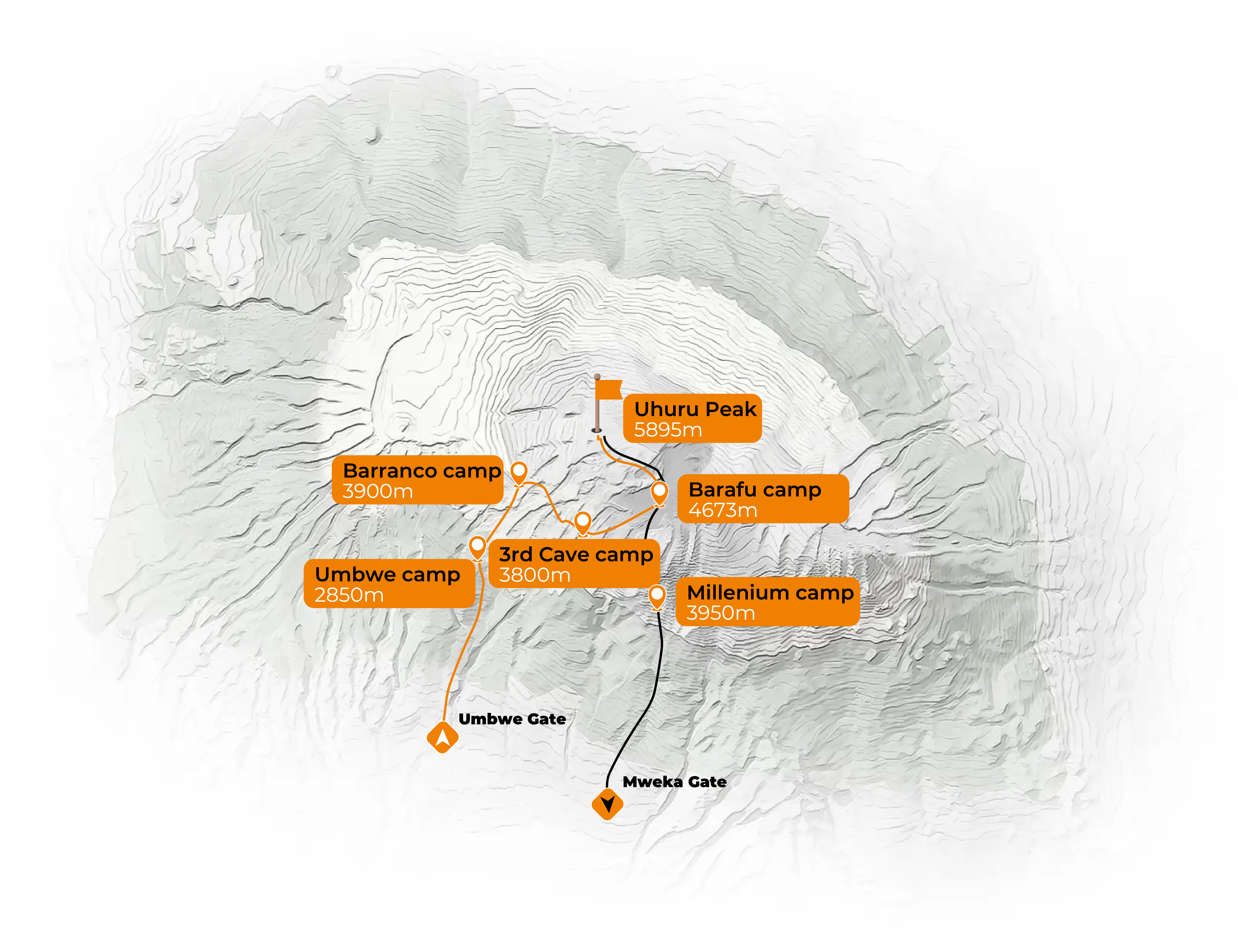

In that case, Lemosho 7 and 8-day itineraries could be your number 1 choice for the best route to climb Kilimanjaro. Yet, as we said previously, 7-day itineraries on the majority of routes would offer good acclimatization and strong success rates. The extended duration of the Lemosho route provides not only excellent acclimatization opportunities but also breathtaking scenery, making it a favored option. If you prioritize a more leisurely pace and wish to immerse yourself fully in the diverse landscapes Kilimanjaro offers, the Lemosho itineraries, with their additional days, may be the perfect fit for your climbing aspirations.
Are you yearning for a night of tranquil stargazing? Or do you lean towards the assurance and refuge of a hut? The Marangu route stands alone in providing dormitory-style hut accommodation. So, if this is a non-negotiable aspect for you, then Marangu is undoubtedly your route of choice!
Yet, sleeping beneath the canvas is a more luxurious experience than one might envision. Our tailor-made tents are crafted with comfort, warmth, and weather resilience in mind, ensuring a serene night amidst the mountain’s majesty. Many of our clients express deep contentment with the comfort afforded by sleeping in a cozy four-season sleeping bag atop a plush mattress.
Moreover, tents offer an exclusive communion with nature, a contrast to the potentially crowded atmosphere of huts. At Serengeti Camping Safari camps on Mount Kilimanjaro, you’ll discover expansive dining tents and dedicated toilet/shower facilities, particularly if you opt for the convenience of a private portable toilet/shower.
NOTE:
Routes that offer hut accommodation:
Marangu route 6 days
Routes that offer comfortable tents:
All routes except Marangu route
Lorem ipsum dolor sit amet, consectetur adipiscing elit. Ut elit tellus, luctus nec ullamcorper mattis, pulvinar dapibus leo.
Lorem ipsum dolor sit amet, consectetur adipiscing elit. Ut elit tellus, luctus nec ullamcorper mattis, pulvinar dapibus leo.
Lorem ipsum dolor sit amet, consectetur adipiscing elit. Ut elit tellus, luctus nec ullamcorper mattis, pulvinar dapibus leo.
Lorem ipsum dolor sit amet, consectetur adipiscing elit. Ut elit tellus, luctus nec ullamcorper mattis, pulvinar dapibus leo.
Lorem ipsum dolor sit amet, consectetur adipiscing elit. Ut elit tellus, luctus nec ullamcorper mattis, pulvinar dapibus leo.
Lorem ipsum dolor sit amet, consectetur adipiscing elit. Ut elit tellus, luctus nec ullamcorper mattis, pulvinar dapibus leo.
The Lemosho route stands out as a preferred choice among the Serengeti Camping Safari and our clients. Renowned for its excellent acclimatization profile, breathtaking vistas, and the highest success rate based on our analytics over the past decade, it has become a top favorite. However, the route's popularity has surged in recent years, making it one of the top three busiest paths on Kilimanjaro. For those seeking a more exclusive and intimate experience, we recommend exploring the 7-day Rongai route itinerary. While it may not boast the same scenic landscapes or feature impressive flora like the Dendrosenecio kilimanjari, it offers a tranquility that is unparalleled—being more than ten times less congested than the frequently traveled routes.
The Marangu Route is often considered the easiest path to climb Kilimanjaro, earning it the nickname "Coca-Cola Route." It features huts for accommodation, a more gradual ascent, and is typically completed in 5 to 6 days. While its popularity and gentler terrain make it accessible for many climbers, it's crucial to recognize that all routes on Kilimanjaro demand physical fitness and proper acclimatization. The choice of the easiest route should align with individual preferences, fitness levels, and the overall experience sought.
The Lemosho Route is renowned for having one of the highest summit success rates on Mount Kilimanjaro. Its scenic beauty, low traffic, and extended duration (7 to 9 days) contribute to better acclimatization, increasing the likelihood of climbers reaching the summit successfully. The route offers a diverse range of landscapes and a more serene experience compared to busier alternatives. While individual factors play a role, the Lemosho Route is often favored for its combination of stunning scenery and a higher chance of summit success.
The Northern Circuit Route on Mount Kilimanjaro is recognized for its low crowd levels, offering climbers a more secluded and serene experience. This less-traveled route provides stunning landscapes and extended trek durations, promoting better acclimatization. While individual preferences and fitness should guide the choice of a climbing route, the Northern Circuit is often favored for those seeking a quieter and more remote Kilimanjaro ascent.
The safety of Kilimanjaro routes relies on factors like fitness, experience, and the guiding team's quality. All routes are generally safe with proper precautions and adherence to acclimatization guidelines. The Marangu Route is often considered safer due to its gradual ascent, hut accommodations, and shorter duration. However, safety depends on individual factors, including fitness and preparation. Regardless of the route, ensuring a safe climb involves choosing a reputable tour operator, maintaining physical fitness, and proper acclimatization. Consultation with experienced guides aids in informed decision-making based on individual circumstances.